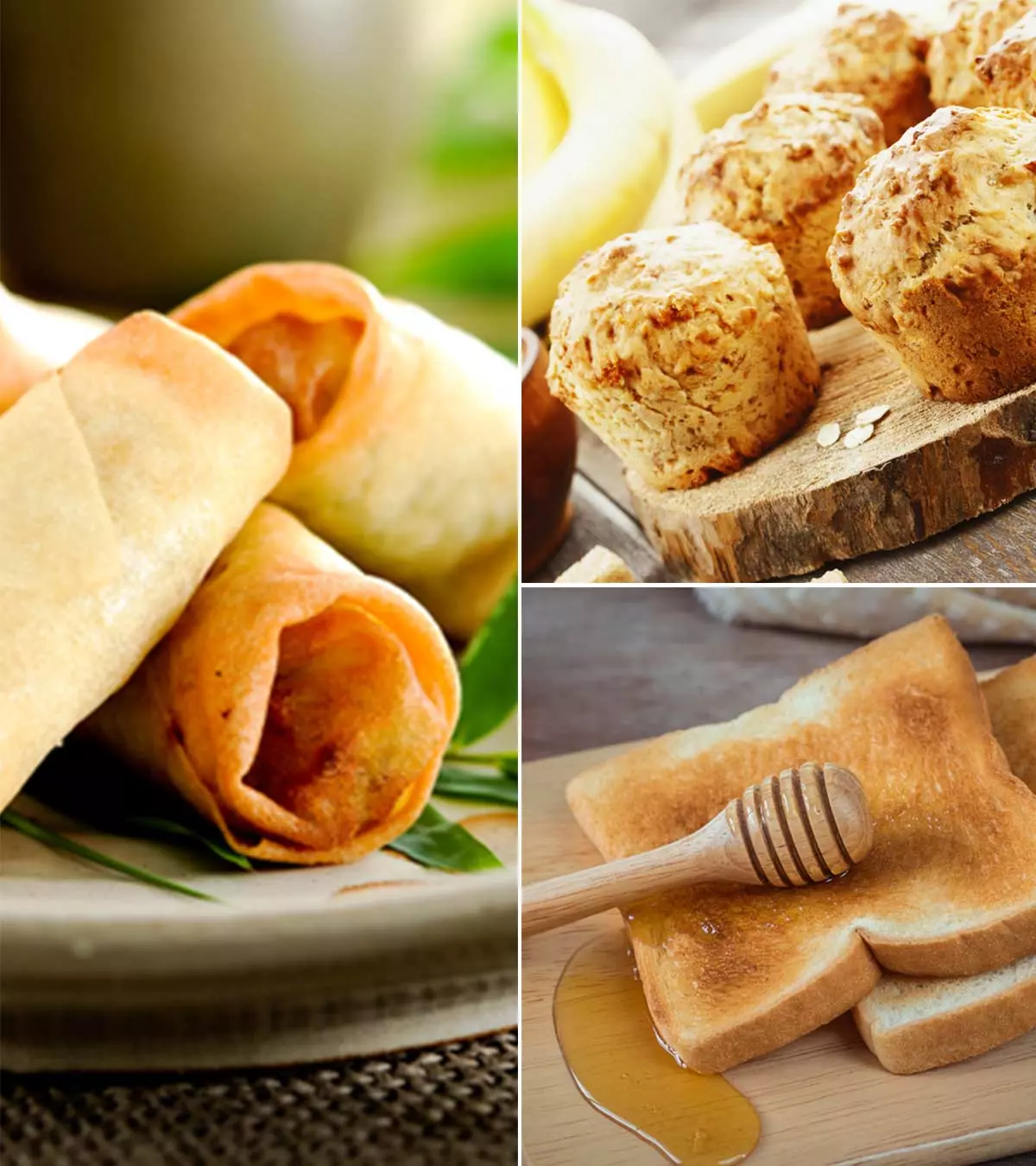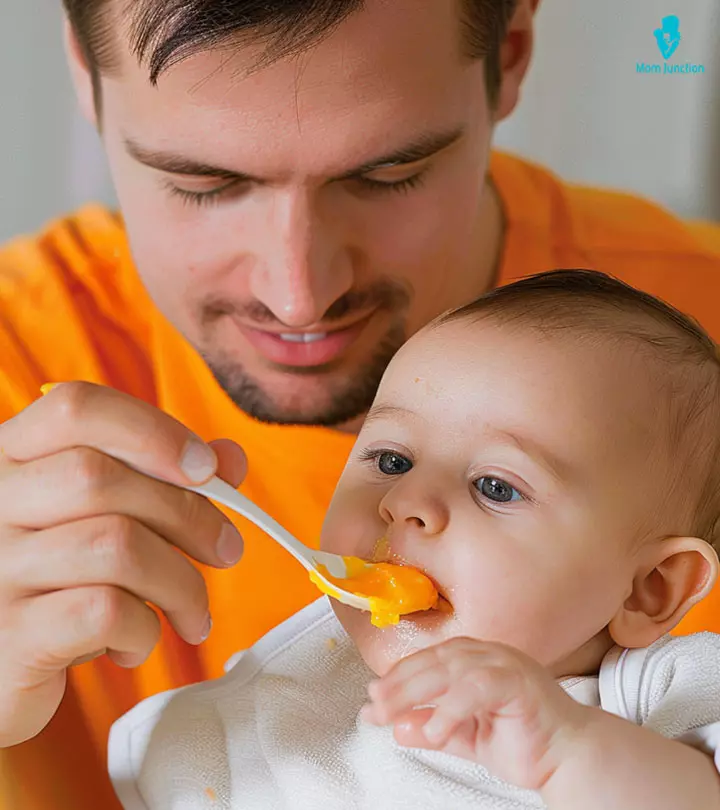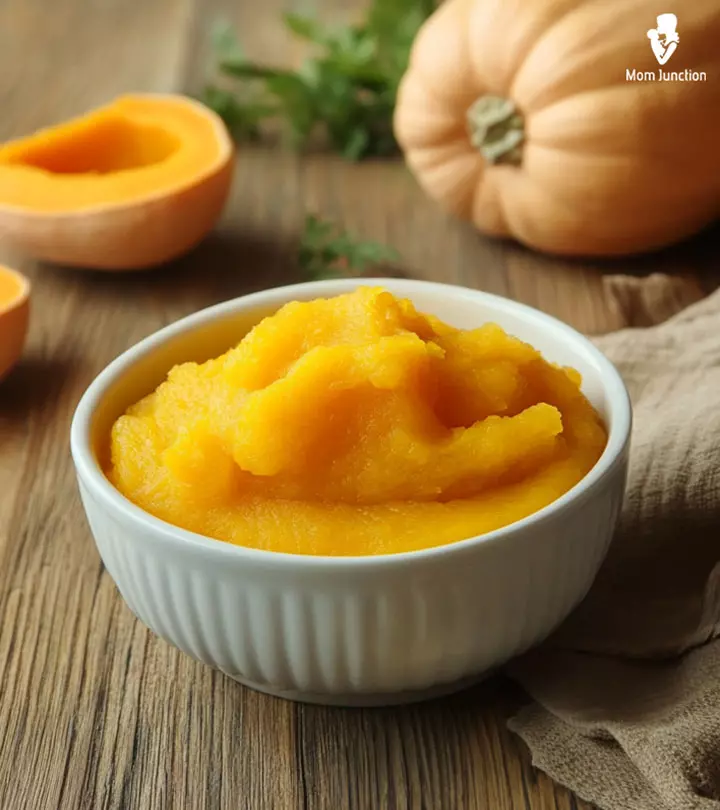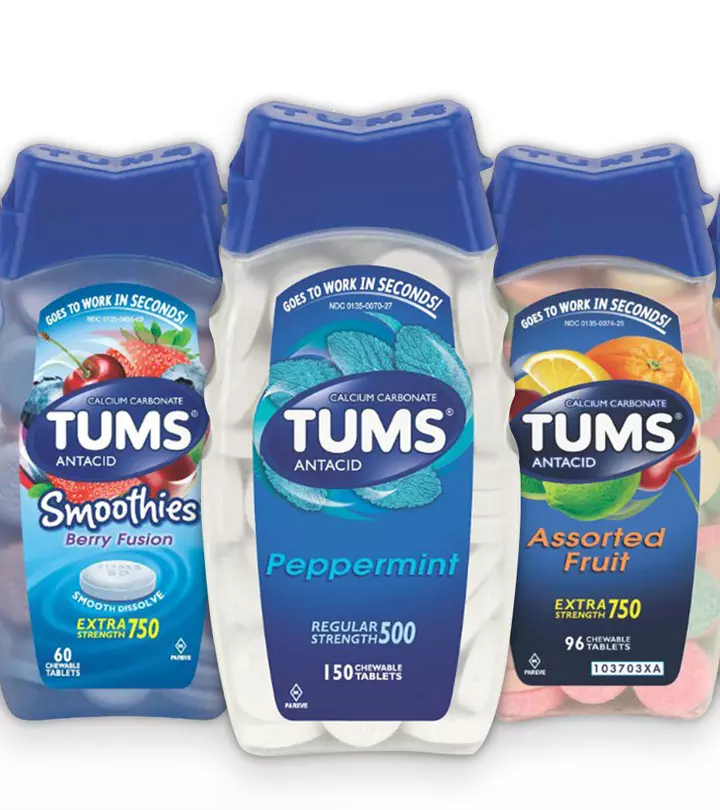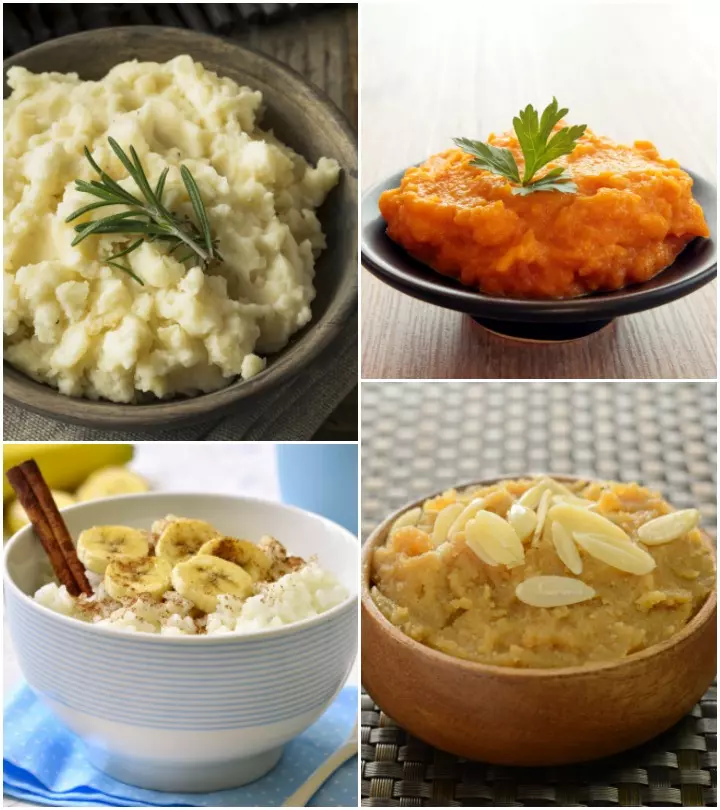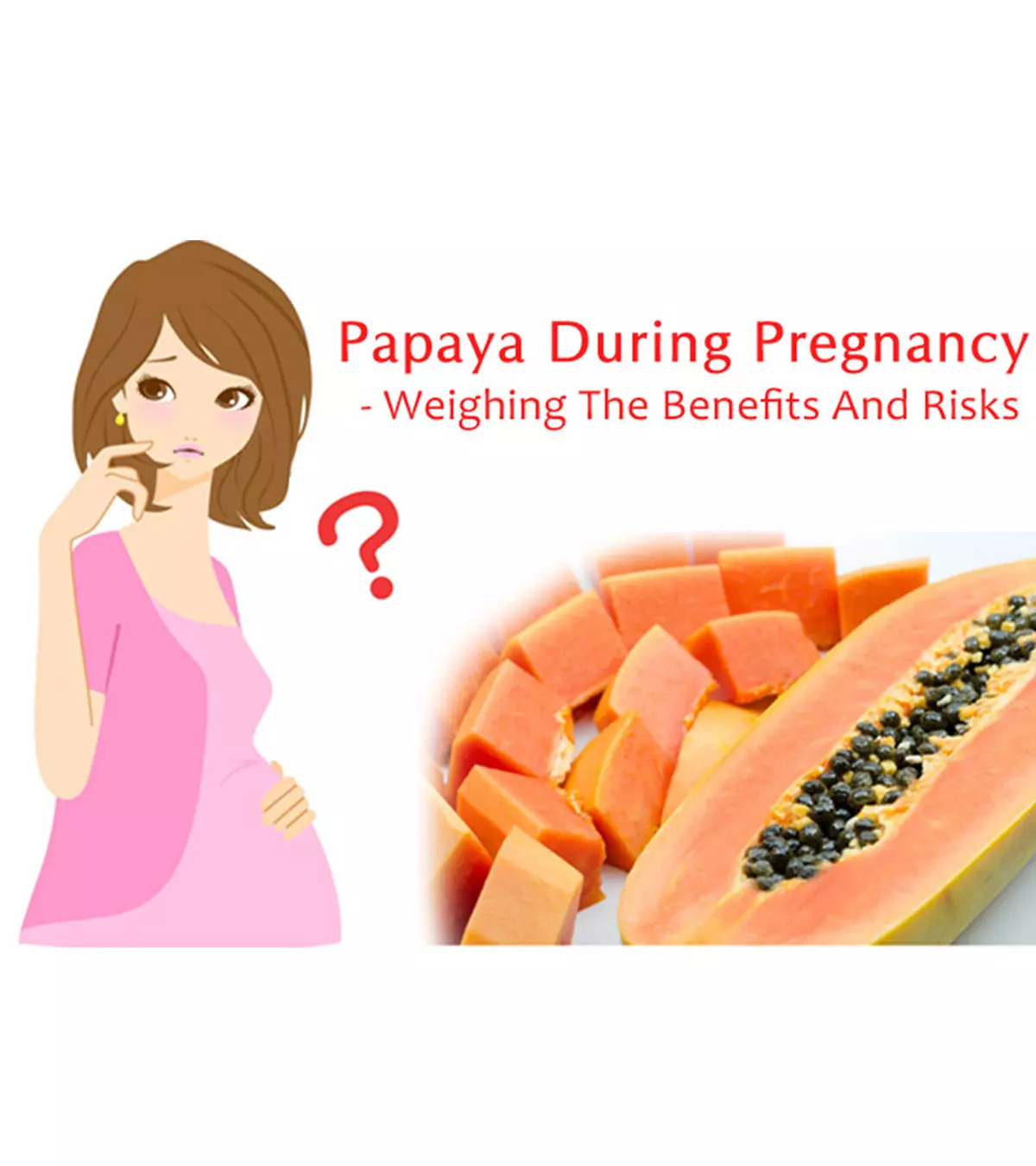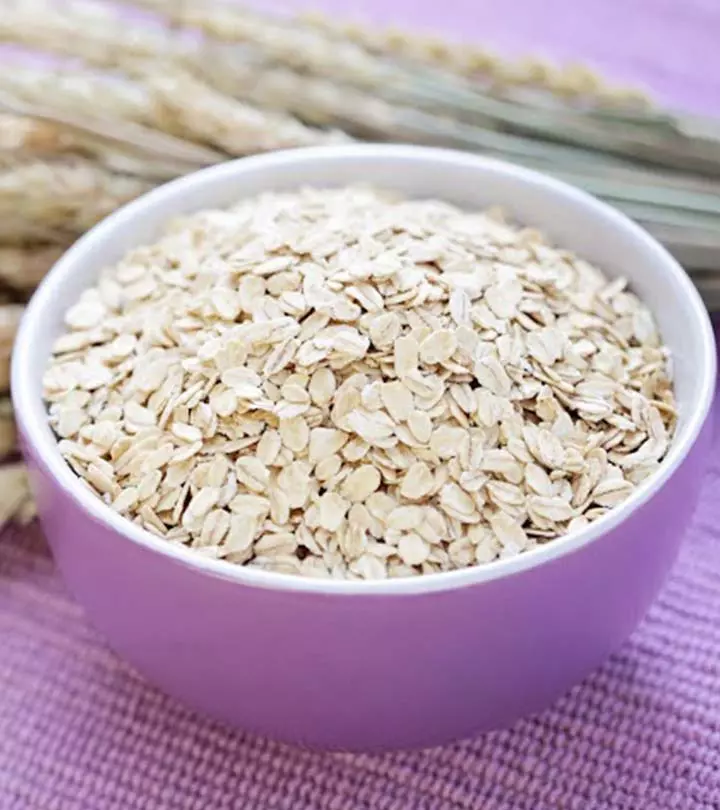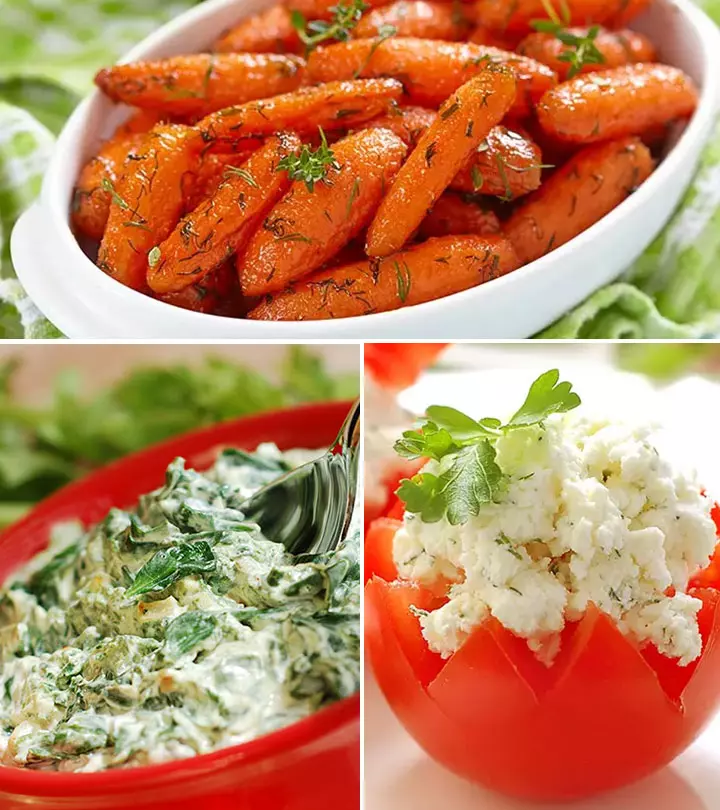
Image: Shutterstock
Getting your children to eat their greens can be tiring. However, you could get them interested in their veggies by taking a break from your usual recipes and trying some unique vegetable recipes for toddlers. Children need wholesome meals rich in proteins, carbohydrates, fats, minerals, and vitamins. Thus, without vegetables, your children will lack the required nutrients for their overall growth. Including a variety of vegetables in your toddler’s meals can ensure they receive essential vitamins and minerals and help them develop healthy eating habits. Vegetables are rich in dietary fiber, which is crucial for digestion, and provide antioxidants that support overall health. According to data gathered by the US Centers for Disease Control and Prevention (US CDC), just over 90% of children and adolescents between the ages of two and 19 included vegetables in their daily diet (1). Although picky eaters may not find vegetables appetizing, you could add a twist to their boring veggies with these tasty recipes. The versatility of these kid-friendly and nutritious recipes will make you excited to cook them and help meet your children’s nutrition needs and satisfy their hunger. So read on!

Key Pointers
- It is essential to include vegetables in your child’s diet to provide them with required nutrients.
- Making interesting vegetable recipes and presenting them uniquely can make it easier to feed your child.
- Glazed carrots, sweet potato pancakes, and buttered green beans are some recipes you can try for your little one.
- You can also modify the recipes according to your child’s preferences to make them enjoy the dish even more.
Delicious Vegetable Recipes For Toddlers
The US CDC recommends that toddlers aged one to two years consume at least two-thirds to one cup of vegetables daily (2). Using simple cooking tricks can make vegetables tastier and help provide their health benefits. Try out these amazingly yummy and healthy vegetable recipes for toddlers that will make them lick their plates clean and make mealtime fun. These recipes can also help toddlers explore new flavors and textures.
1. Maple syrup glazed carrots

You can serve this fiber-rich dish with plain rice. Carrots are rich in Vitamin A, which improves skin and eye health. Studies show that carrots are one of the most preferred vegetables among toddlers and young children (3). Carrots also contain folate and dietary fiber that are good for growing tot.
You will need
- Peeled and diced carrots
- Maple syrup or honey (as preferred)
- Water
- Unsalted butter
- Kosher salt
- Black pepper (optional)
How to
- Place all the ingredients in a large pan. Add water, and cover it.
- Cook till the carrots become tender, and the liquid reduces to a glaze.
 Quick tip
Quick tip2. Creamy spinach
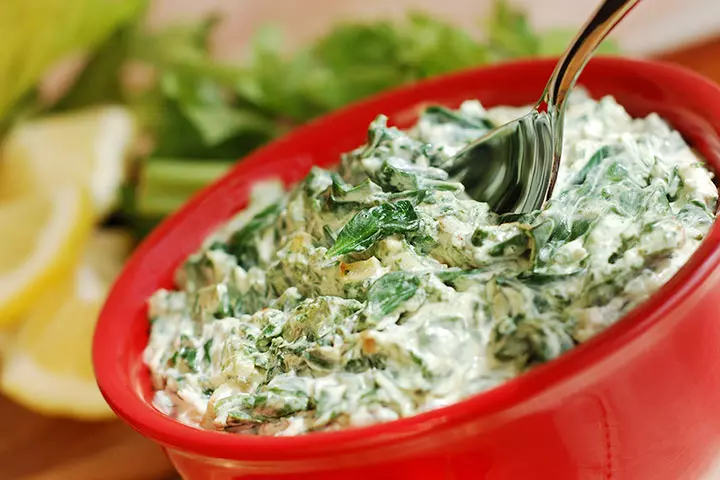
It is a delicious twist to the green and leafy vegetable. Spinach is a rich source of iron, vitamin B6, C, E, beta-carotene, folate, potassium, magnesium and fiber.
You will need
- Freshly chopped spinach
- Mushroom soup (can be prepared at home or use a can)
- Butter or fresh cream
- Garlic
- Salt
- Water
How to
- Boil the spinach and drain.
- In a pan, add the boiled spinach, mushroom soup, and butter. If using fresh cream, drizzle it over in the end .
- Add water and let it boil over medium heat.
- Add a little garlic.
- Season with cream and salt and serve.
3. Broccoli and cheese patties
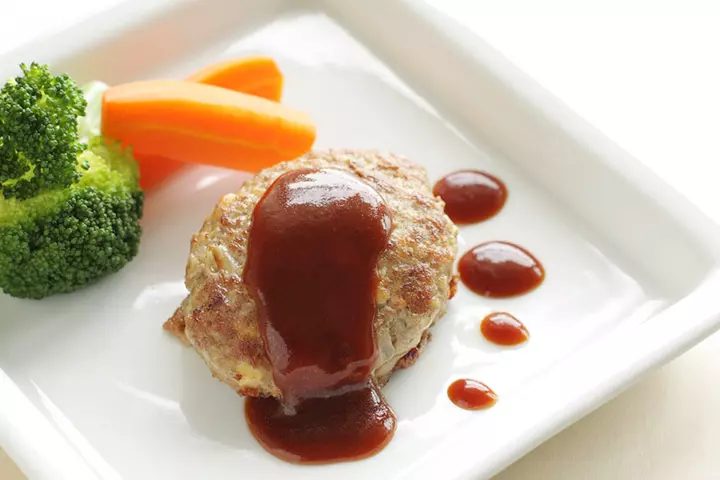
The delicious recipe can be a perfect snack. Eating broccoli helps prevent cancer. Its anti-inflammatory properties clean the system and help in digestion. It is also a super food to keep your little one’s heart healthy.
You will need
- Chopped broccoli
- Breadcrumbs
- Shredded cheese
- Olive oil
- Salt
How to
- Steam the broccoli till it is tender.
- In a blender, add all ingredients except oil and churn well.
- Scoop out the mix and make small flattened balls.
- Heat the oil in a pan and cook until golden.
4. Tomato avocado cups
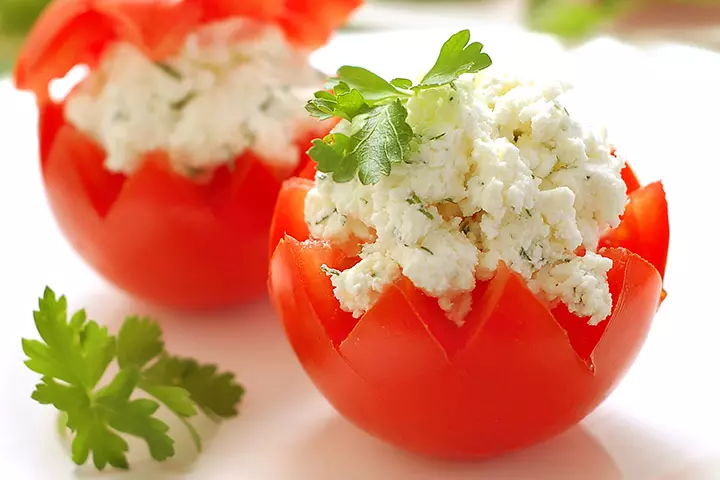
The recipe combines the goodness of tomatoes with avocados. Avocados are good for the heart, have anti-inflammatory benefits, regulate blood sugar levels and prevent cancer. Tomatoes are great for cardiovascular and bone health. The tangy vegetable also helps fight cancer.
You will need
- Cherry tomatoes
- Guacamole (make it by mashing the flesh of an avocado and adding salt ,white pepper, and lime juice)
How to
- Slice the cherry tomatoes and scoop it out.
- Fill it with guacamole.
5. Rice and vegetable mix
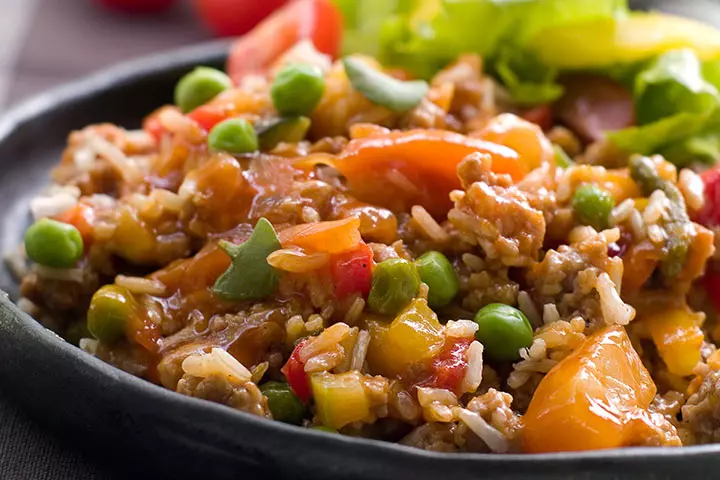
It can be a main course meal that is full of the goodness of vegetables. You may use white quinoa in place of rice for protein-rich versions.
You will need
- Chopped vegetables. You can include your tot’s favorite ones.
- Rice or white quinoa
- Oil
- Tomato sauce (puree tomatoes and cook with herbs of choice)
How to
- Take a large pot and add oil and vegetables in it. Sauté until the vegetables turn tender.
- Add the tomato sauce and let it cook.
- Now add the rice, cover, and cook.
- Remove from heat once rice or quinoa is cooked and serve it steaming hot.
 Research finds
Research finds6. Sweet potato pancakes
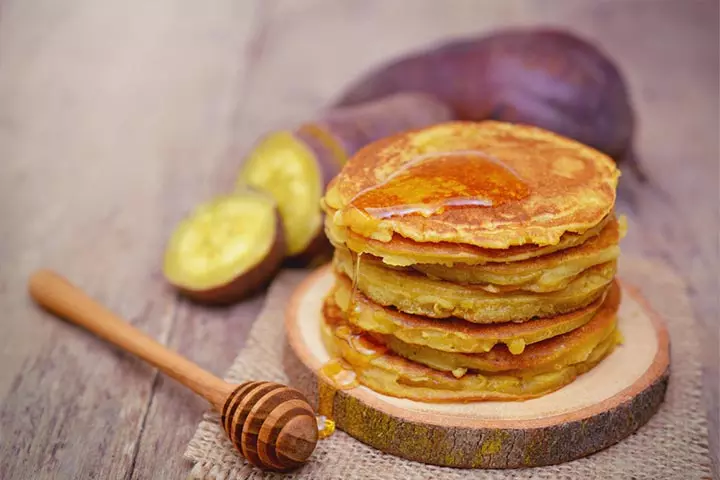
The healthy recipe will pamper your toddler’s sweet tooth. Sweet potatoes have anti-oxidant and anti-inflammatory properties and keep blood sugar in check.
You will need
- Sweet potatoes
- Rolled oats
- Olive oil (optional)
- Dark molasses (optional)
- Vanilla extract
- Ground cinnamon
- Plain yogurt or plain greek yogurt
How to
- Pierce the sweet potatoes with a fork and microwave for about five minutes.
- Peel them once they cool down.
- Blend the oats in a food processor. Remove and keep it aside.
- Blend the sweet potatoes.
- Add the sweet potato puree, oats, and the remaining ingredients in a bowl and mix.
- Heat a pan on medium heat and pour the mix.
- Flip and cook till it turns golden.
 Quick tip
Quick tip7. Vegetable kebabs

Pamper your kid with these kebab sticks to make your toddler feel all grown-up. Bell peppers have anti-oxidant properties that fight cancer. Squash has anti-oxidant and anti-inflammatory properties. It keeps blood sugar in check and promotes overall health. Tomatoes are great for cardiovascular and bone health. It helps fight cancer too. Zucchini has anti-oxidant, anti-inflammatory and anti-microbial properties. It regulates blood sugar, is good for heart health and fights cancer.
You will need
- Red bell pepper
- Yellow squash
- Green zucchini
- Cherry tomatoes cut in half
- Olive oil
- Lemon slices
- Salt and pepper to taste
How to
- Heat the grill. Slide the vegetables on skewers and brush them with olive oil.
- Sprinkle a little lemon juice and salt and pepper.
- Grill until the vegetables turn tender.
- Remove from the skewer and put in toddler friendly sticks.
8. Pumpkin and chocolate popsicles

The delicious delight will make your toddler ask for more. Pumpkin helps fight obesity, improves digestion, prevents constipation and has anti-oxidant properties.
You will need
- Pumpkins
- Coconut milk
- Honey
- Pumpkin pie spice
- Chocolate chips
- Melted chocolate
How to
- Add the milk, pumpkin and honey in a blender and churn.
- Pour this into Popsicle molds and freeze.
- Drizzle some melted chocolate.
- Add some chocolate chips and freeze again.
9. Buttered green beans
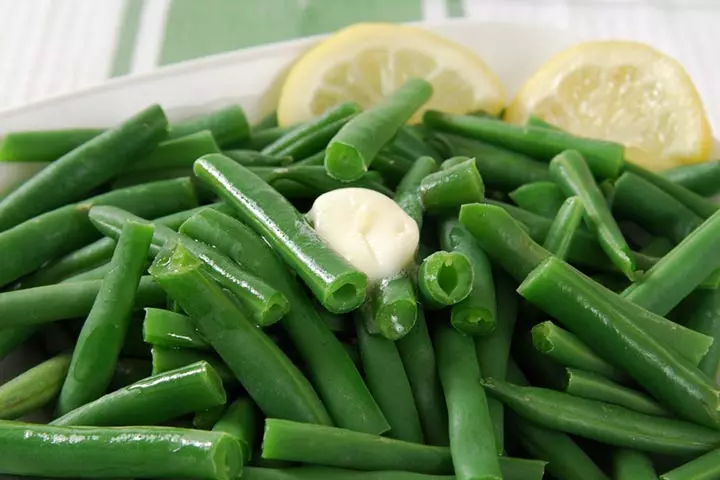
It is a healthy and delicious green vegetable recipe for toddlers. Beans help prevent heart disease and cancer. It also helps fight obesity.
You will need
- Green beans
- Butter
- Mushrooms (optional)
- Kosher salt
- Black pepper
- Grounded garlic
How to
- Steam the green beans.
- Keep it in ice water and drain. Pat it dry and keep it aside.
- Melt the butter in a pan, and sauté mushrooms. Season with salt and pepper.
- Now add garlic and stir.
- Add the green beans and cook for a few minutes. Serve it hot.
 Quick tip
Quick tip10. Vegetable and cheese scramble
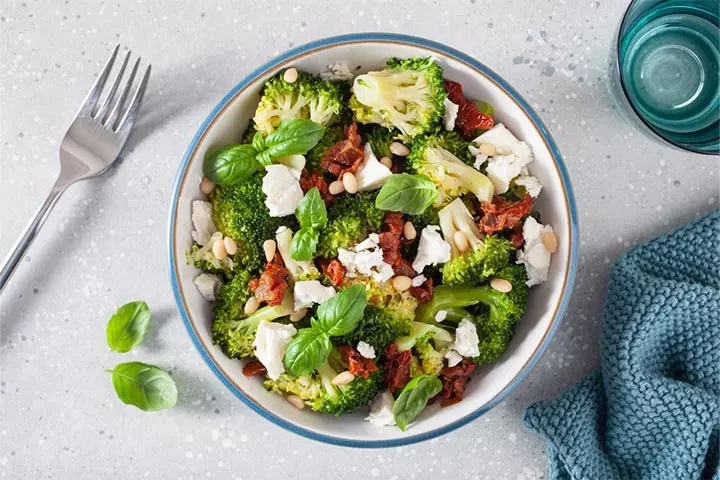
It is a perfect breakfast recipe to give a healthy start to your toddler’s day. The health quotient of this recipe depends on all the vegetables that you add.
You will need
- Vegetables of your toddler’s choice
- Butter
- Grated cheese
- Salt
- Pepper
How to
- In a pan, melt the butter and add vegetables. Add salt and pepper. Cook till vegetables are tender.
- Sprinkle cheese and cook.
- Stir so that the molten cheese coats the vegetables.
11. Cauliflower with parmesan cheese
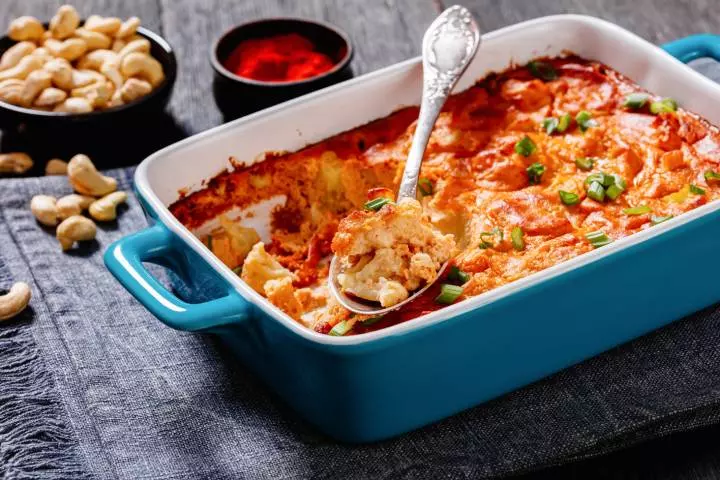
It’s a cheesy and delicious recipe that can be served as an evening snack or a side dish.
You will need
- Cauliflower florets (cut into small pieces)
- Grated parmesan cheese
- Olive oil
- Salt
- Garlic powder
How to
- Preheat the oven to 425°F (218°C).
- Put the cauliflower florets in a baking dish. Add olive oil, salt, and garlic powder. Mix well.
- Generously sprinkle parmesan cheese all over the cauliflower florets.
- Bake the florets for 25 to 30 minutes until the florets are completely cooked and turn golden in color.
- Serve warm with homemade dip and a cup of lemonade.
12. Baked kale chips
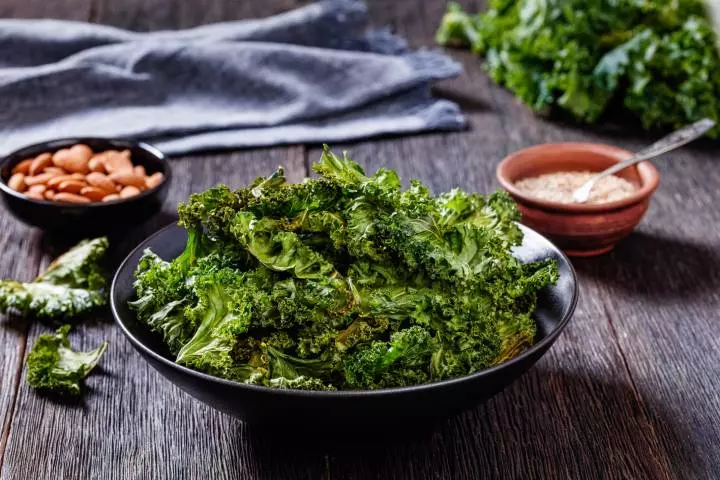
These chips are easy to consume, comfortable to digest, and nutritious. They make a perfect go-to snack toddlers can eat with any homemade dip.
You will need
- Kale (thinly sliced)
- Sea salt
- Garlic powder
- Olive or avocado oil
How to
- Preheat the oven to 325°F (162.7°C).
- In a large bowl, combine the kale slices with salt, olive oil, and garlic powder. Mix well to ensure the kale slices are well coated.
- Spread the kale slices in a single layer on a baking sheet.
- Bake for eight minutes on each side until the slices are crispy and golden.
Tips To Promote Vegetable Intake In Toddlers
Introducing vegetables early can help develop a child’s interest in eating them during childhood and beyond (5). Since some toddlers may resist vegetables, including them regularly in their diet can be challenging. Below are some practical ways to encourage toddlers to eat veggies (6) (7).
- Give them a choice: Offer various vegetables at different meals and let your child choose the ones they prefer. Allowing children to select what they want to eat and when can make them feel more in control and encourage them to try new foods.
- Get creative in the kitchen: Pair veggies with foods they already enjoy as it builds positive associations. For example, if your child likes pasta, add suitable veggies like carrots and broccoli to make it healthy and tasty. You can finely chop, grate, or shred the veggies to make them more appealing and less noticeable.
Sharing how she creatively adds vegetables into her toddler’s meals, an anonymous blogger writes, “There are certain things like carrots or squash that my son used to love but now absolutely will not eat it. So I will add it to his cereal in the morning, and he gobbles it right up. I also like to mix in fruit purees a lot of the time in his cereal, but when he needs some more veggies or to just mix things up, the veggies are great too (i).”
- Serve in an appealing way: Young children are visual eaters. Their brains respond positively to bright colors, fun shapes, and patterns. So, use colorful plates and cut vegetables into fun shapes to make the meal look more appealing.
- Involve the toddler: Let your child help wash vegetables under your supervision, assist with meal preparation, and do simple tasks like stirring or mixing to increase their interest in the food. Involving toddlers in the kitchen makes them feel important and helps build a positive relationship with food.
- Use positive reinforcement: Encourage your toddler to try new vegetables and praise them when they do. For example, say, “I love how you tried that broccoli and zucchini salad—great job!” Positive reinforcement helps toddlers feel proud of their efforts and encourages them to try new things.
- Set a good example: Children pick habits from their parents. If they see you eat vegetables regularly, they understand that healthy eating is enjoyable. So, talk positively about veggies and discuss their benefits with your child. Let them see you relish veggies; eventually, they will follow you. If you do not like a vegetable, stay neutral about it and show no dislike or disinterest in it.
Frequently Asked Questions
1. What vegetables can toddlers eat raw?
Toddlers may eat raw vegetables, such as carrots, cucumbers, tomatoes, and red and yellow bell peppers. However, ensure to wash the vegetables thoroughly before serving them to your child to avoid the risks associated with microbial contamination or the presence of pesticides (8).
2. Are there any vegetable recipes we can make in advance or freeze for later use?
Vegetable dishes such as baba ganoush, vegetable soups, lentil bolognese, and vegetable stir fry may be made in advance and frozen for later use.
3. Are there any safety considerations when cooking vegetable dishes for toddlers?
When cooking for toddlers, you should clean vegetables thoroughly, especially lettuce, spinach, and other salad greens. Children should avoid eating raw or undercooked sprouts as they may contain germs. Likewise, keep raw meats, poultry, fish, and seafood away from cooked food, fruits, and vegetables. Thoroughly wash hands, utensils, and chopping boards after handling raw meats and before using the same items to process vegetables (9).
4. What are the most suitable vegetables for toddlers?
Steamed or well-cooked vegetables like carrots, beans, sweet potatoes, broccoli, peas, and spinach are rich in nutrients and commonly preferred for toddlers. Since toddlers may sometimes be picky about eating them alone, the American Academy of Pediatrics (AAP) recommends adding other foods with vegetables, such as rinsed corn and mashed black beans with diced sweet potato, to make the meal more appealing and nutritious (10).
Vegetables are high in proteins, carbohydrates, fats, minerals, and vitamins, but encouraging your toddler to eat them might be difficult. To interest them, consider adding a flavor twist to these vegetables or offering them as finger foods for toddlers. You can experiment with the super healthy vegetable recipes for toddlers, such as preparing maple syrup glazed carrots, adding a creamy and cheesy touch to bland broccoli and spinach, and turning simple sweet potatoes and other vegetables into pancakes and kebabs, to see what works best for your child. You may also try your hand at these Indian food recipes for toddlers. Don’t be afraid to fiddle around with the recipes to make them more engaging and appealing to your youngster.
Infographic: Delicious Vegetable Recipes For Toddlers
We all know how hard it is to get our picky eaters to eat healthy vegetables. However, you can switch your usual recipes with interesting ones for your toddlers. Read this infographic to discover some healthy and tasty vegetable recipes.
Some thing wrong with infographic shortcode. please verify shortcode syntax
Illustration: Amazingly Delicious Vegetable Recipes For Toddlers
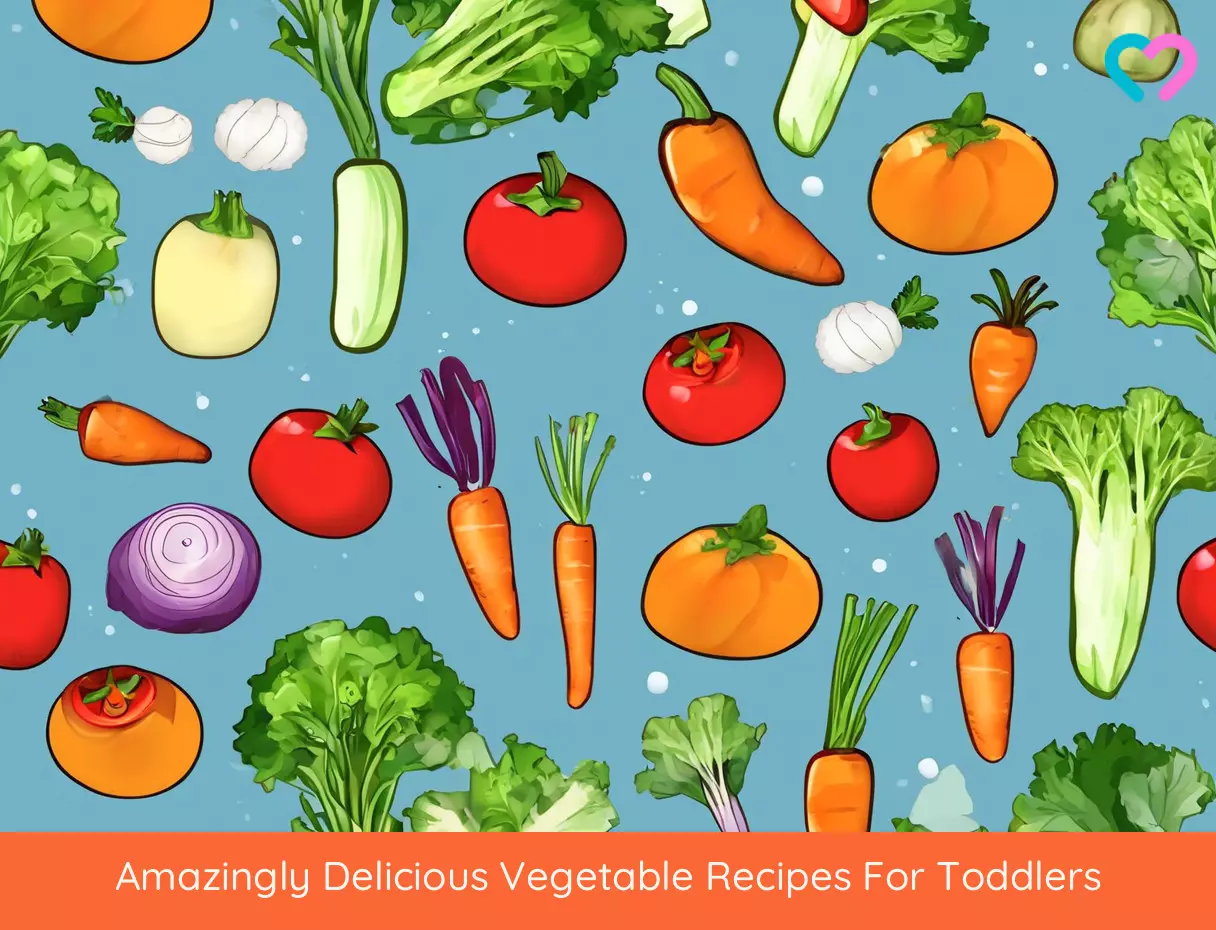
Image: Stable Diffusion/MomJunction Design Team
Exciting vegetable stir-fry choices please kids’ taste buds and offer simplified healthy meals for a balanced diet. Quick and easy recipes cater to busy parents. Perfect for families on the move!
Personal Experience: Source
MomJunction articles include first-hand experiences to provide you with better insights through real-life narratives. Here are the sources of personal accounts referenced in this article.
i. The Art of Hiding Vegetables in Kid’s Food.
https://whippersnappersblogspot.wordpress.com/2015/02/17/the-art-of-hiding-vegetables-in-kids-food/
References
- Fruit and Vegetable Consumption Among Children and Adolescents in the United States 2015–2018.
https://www.cdc.gov/nchs/products/databriefs/db391.htm - Good Nutrition Starts Early.
https://www.cdc.gov/nutrition/features/good-nutrition-starts-early.html - Suzanne Fletcher et al. (2016); Tracking of toddler fruit and vegetable preferences to intake and adiposity later in childhood.
https://pmc.ncbi.nlm.nih.gov/articles/PMC6865898/ - Do’s and Don’ts of Transitioning Baby to Solid Foods.
https://www.hopkinsmedicine.org/health/wellness-and-prevention/dos-and-donts-of-transitioning-baby-to-solid-foods - Jeanette P Rapson et al. (2025); Impact of a “vegetables first” approach to complementary feeding on later intake and liking of vegetables in infants: a study protocol for a randomised controlled trial.
https://pmc.ncbi.nlm.nih.gov/articles/PMC8314593/ - Vegetables: tips to encourage children to eat more
https://raisingchildren.net.au/toddlers/nutrition-fitness/healthy-eating-habits/vegetables - Encouraging Your Child to Eat Fruits and Vegetables
https://www.ucsfbenioffchildrens.org/education/encouraging-your-child-to-eat-fruits-and-vegetables - Children’s diet – fruit and vegetables.
https://www.betterhealth.vic.gov.au/health/healthyliving/childrens-diet-fruit-and-vegetables - Food safety at home.
https://caringforkids.cps.ca/handouts/healthy-living/food_safety_at_home - Building Balanced Snacks to Feed to Toddlers.
https://www.healthychildren.org/English/ages-stages/toddler/nutrition/Pages/Selecting-Snacks-for-Toddlers.aspx
Community Experiences
Join the conversation and become a part of our nurturing community! Share your stories, experiences, and insights to connect with fellow parents.
Read full bio of Shivani Sikri
Read full bio of Jessica Albert
Read full bio of Swati Patwal
Read full bio of Vidya Tadapatri







